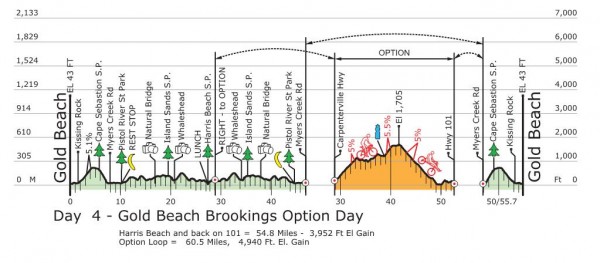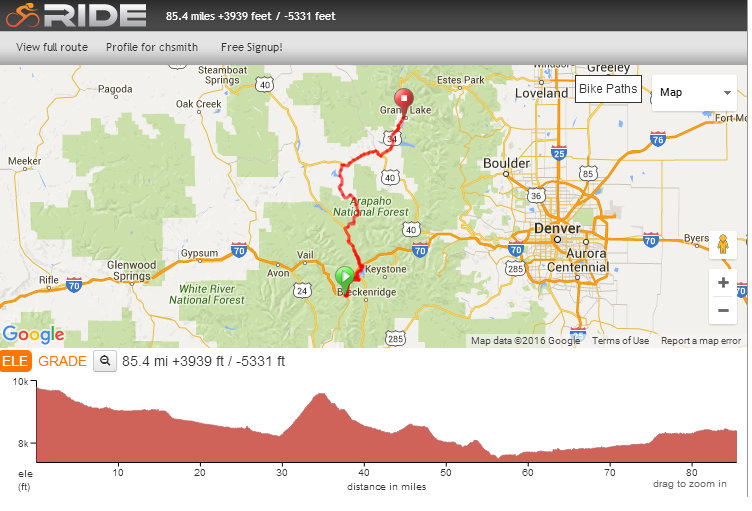Which week-long bicycle tour has the most elevation gain — a 457-mile ride along the Pacific Coast in Oregon or a 403-mile bicycle tour over five Rocky Mountain passes in Colorado?
If you guessed Cycle Oregon’s 457-mile option, you’d be correct.
The 2016 Ride the Rockies summits at least five high altitude mountain passes, totaling more than 29,000 feet of elevation gain.But the Cycle Oregon bike tour on the rugged Pacific coast is no shoreline romp for beach cruiser bikes. The Oregon coast is a rugged route created by numerous drainages and continental plate tectonics. The long option (457 miles) gains 33,689 feet, while the short (365 miles) option gains a respectable 25,853 feet.
Ride the Rockies and RAGBRAI
I first noticed this anomaly between Ride the Rockies and some “flatter” across-state bike rides in 2011. That year, the Colorado ride only surpassed RAGBRAI’s alleged flat state ride by barely 200 feet [Myth-busting the RAGBRAI and Ride the Rockies bike tours].An Iowa cyclist said the elevation gain established on continuous rollers across his state’s landscape quickly added up. RAGBRAI cyclists shift gears hundreds of times passing through hilly sections of Iowa, while RTR cyclists find a comfortable gear for climbing a long mountain pass and grind it out for hours.
Of course there was one difficulty that Iowa didn’t suffer that year — high-altitude oxygen deprivation. But they did get their share of heat and humidity.
Climbing rates
Although the Cycle Oregon bike tour has more total elevation gain, the route is slightly longer so RTR has a higher rate of climb — by less than 2 inches a mile. Ride the Rockies gains 73.9 feet per mile; long option for Cycle Oregon is 73.7 feet per mile. The short option is nearly 71 feet per mile.
To compare, the 2016 RAGBRAI is the third shortest in its 44-year history and ranks 24th in elevation gain. That computes to about 44 feet of elevation gain a mile.
Compare that to the 206-mile Seattle to Portland Classic, which gains 24 feet per mile.
Likes and dislikes
All this just looks at one factor in the difficulty of various bike tours. A lot depends on which way the wind is blowing the how hot the temperatures get.
A participant in Cycle Oregon might enjoy the frequent stops in coastal tours, while a cyclist on Ride the Rockies might enjoy “the zone” of a long uphill climb.
In either case, the scenery of the Pacific Coast vs. the Rocky Mountains should be enough to make a cyclist on either ride forget the difficulties.



Recent Comments